Five of the greatest modern buildings in Metro Detroit
Brian Conway |
Wednesday, September 28, 2016
Michigan doesn't get nearly the regard it should for its contributions to modernist architecture. But a recently released book on Michigan's illustrious history of design makes a compelling case.
We asked one of the book's editors to list his favorite modern buildings in Metro Detroit.
As a state historic preservation officer, every day I espouse Michigan's importance in the world of design. Our state has made enormous contributions in this arena, from architecture to automobiles to furniture to boats, as well as our important design education institutions.
So when I was asked to identify my five favorite modern building in metro Detroit, I was confronted with a nearly impossible task. Metro Detroit is so rich in modernist architecture, it's difficult to recognize just a few.
Nonetheless I accepted the challenge, but made my task easier by focusing on buildings designed by Michigan-based architects. So here are my five favorite (with caveats) modern buildings in metro Detroit.
The Cranbrook Educational Community
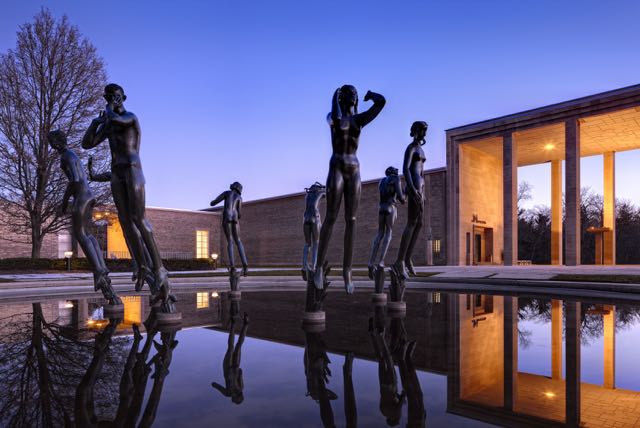
Located in Bloomfield Hills, Cranbrook is recognized as the cradle of American modernism, having impacted architecture, furniture, design, and art. It's impossible to overstate the school's importance.
Its beautiful campus and early buildings were designed by Eliel Saarinen, one of the seminal architects of the period. The entire campus, all fourteen buildings, is a National Historic Landmark.
General Motors Technical Center
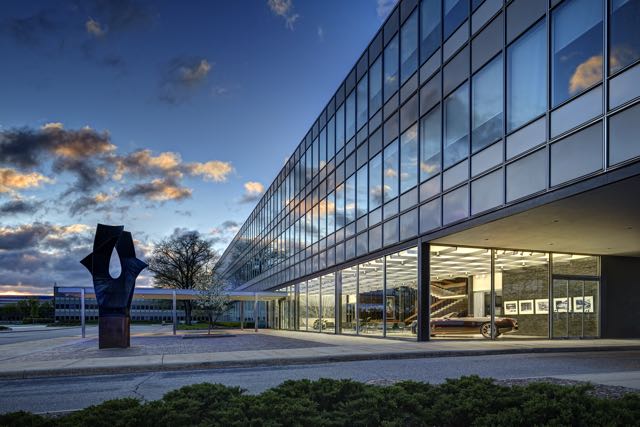
The remarkable corporate campus, designed by Eero Saarinen, son of the Cranbrook designer Eliel Saarinen, demonstrates total design cohesion. Nearly everything, from doors to floor plans to the central lake, conforms to the same modular ratio.
Saarinen also commissioned several stunning works of art and design, like the spiral staircase in the Research & Design Administration Building, where each of its massive slabs seems to defy the laws of physics.
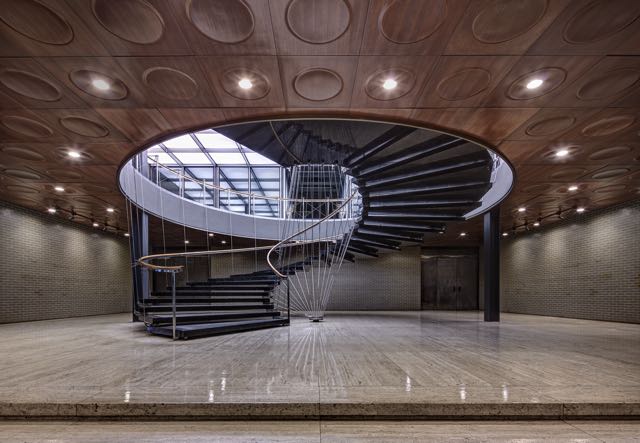 Spiral staircase at the Tech Center
Spiral staircase at the Tech Center
There's so much more to say about the Tech Center, which can accommodate 20,000 employees and has a long history of design firsts in the automotive world. Officially opened in 1956, the historic campus was recognized in 2014 as a National Historic Landmark.
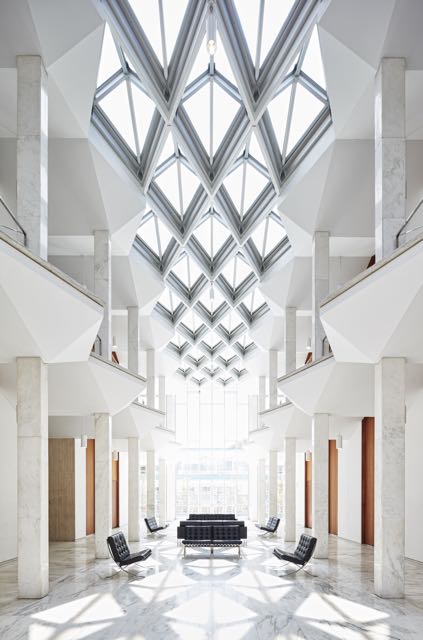 Interior of the McGregor Conference Center
The McGregor Memorial Conference Center
Interior of the McGregor Conference Center
The McGregor Memorial Conference Center
Located on Wayne State University's campus in Detroit, the McGregor Memorial Conference Center is a jewel designed by Minoru Yamasaki,
one of America's most important modern architects. Constructed in 1958, it was the first of four buildings he would design for the school.
The sculpture garden and pool are almost as famous as the building itself. Which really says something considering its main hallway, with pyramidal skylights, was a real innovation for its time.
Together with the restored water pools it, too, is a National Historic Landmark.
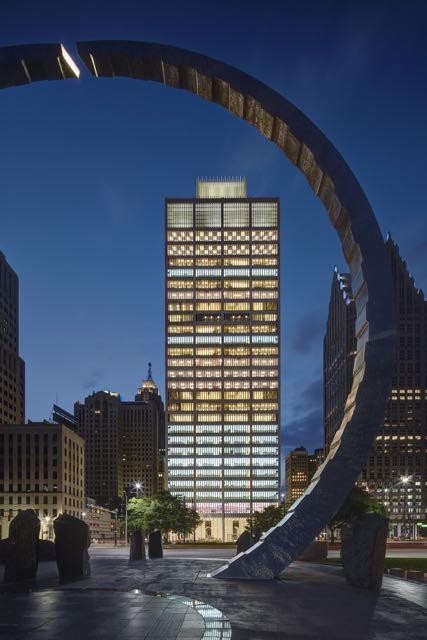
One Woodward Avenue
The Michigan Consolidated Gas Building, aka One Woodward Avenue, was also designed by Minoru Yamasaki and built in 1962. The steel-framed, 32 floor, skyscraper holds a prominent spot on the Detroit skyline. Its facade is a series of repeating bays and piers, and the windows on the uppermost floors are a mere 12 inches.
Also notable is its gleaming lobby, surrounded by 82 glass panes, and columns, stairs and floors made of finished white marble.
W. Hawkins Ferry House
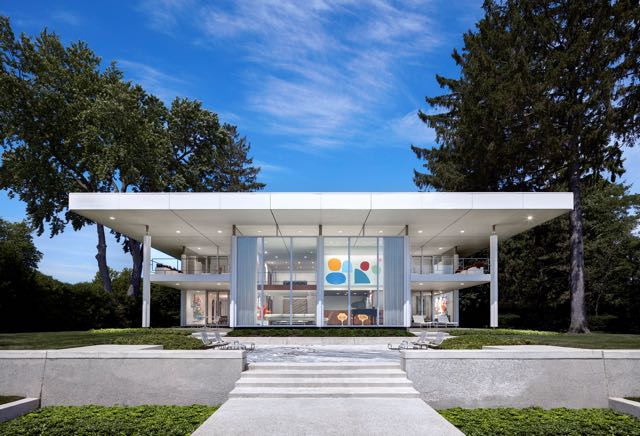 Exterior of the Hawkins Ferry House
Exterior of the Hawkins Ferry House
While it may be the the least known building on the list, the W. Hawkins Ferry House in Grosse Pointe Shores is a testament to the beauty of William Kessler's designs.
The house was built in 1964 for William Hawkins Ferry, who attended Cranbrook and where he possibly developed his appreciation for modern art and architecture. Over the years, Ferry amassed an enormous art collection and asked Kessler to design a gallery-like, open floor plan for his house. The expansive windows also make use of the great views provided by Lake St Claire.
"Michigan Modern: Design that Shaped America," published by Gibbs Smith, is a collection of essays written by scholars on the importance of Michigan’s design industry. It's available at bookstores and online.
All photos by James Haefner, courtesy of the Michigan State Historic Preservation Office.